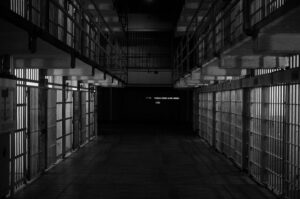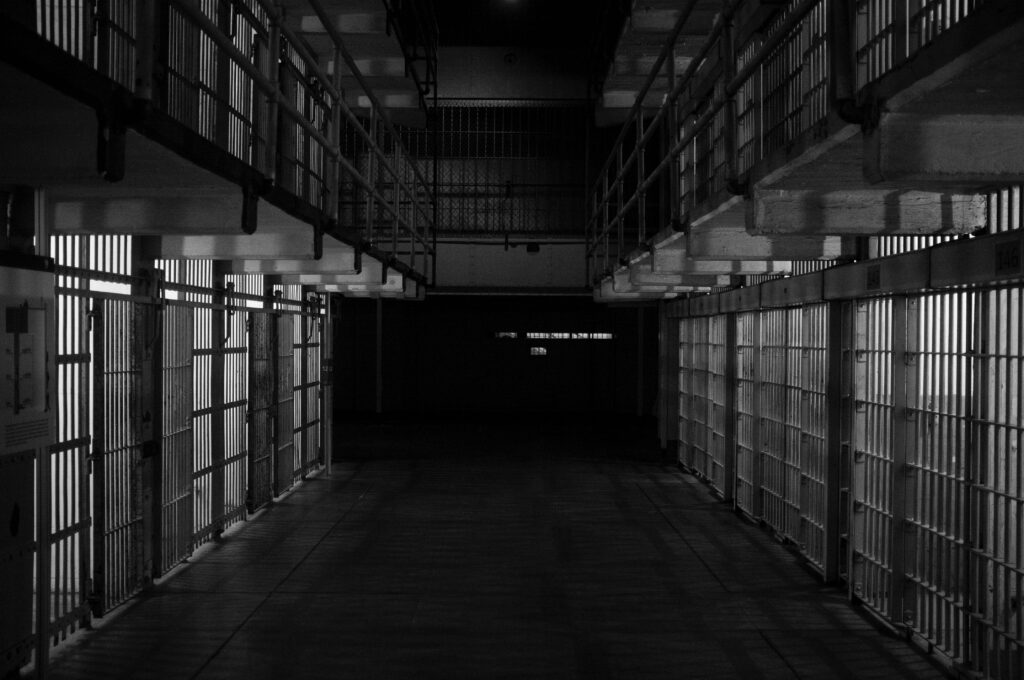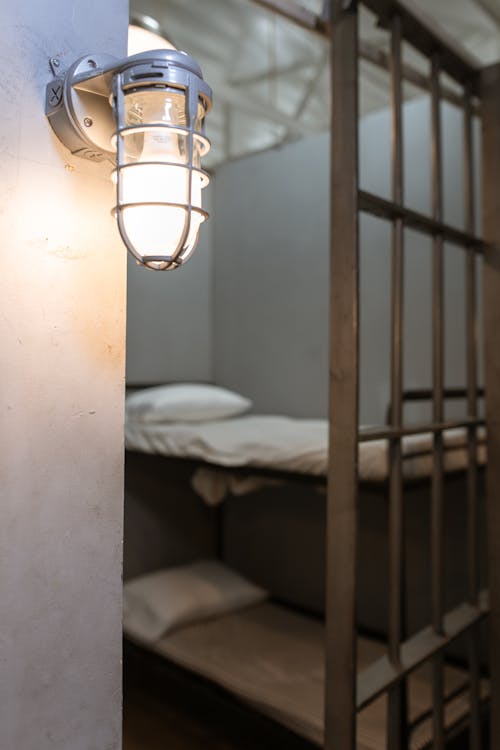By Gabby Korb
President Biden signed Executive Order 14006 banning the renewal of private prison contracts, stating that “[t]his is the first step to stop corporations from profiting off of the incarcerated—incarceration that is less humane and less safe, as the studies show.”[1] Although this can be seen as a positive step in the fight against injustice in the criminal system, the impact of this executive order is likely more rhetorical than concrete. The main issue with Executive Order 14006 is that it only focuses on renewal of “Department of Justice contracts with privately operated criminal detention facilities,”[2] which means it only targets federal prisons. This leaves a massive loophole for immigration detention centers and state and county-run detention centers. Additionally, because it is an Executive Order, the policy will likely end up as a fleeting attempt to tackle a major issue because it is subject to the whim of future administrations. These issues beg the question of what the strongest long-term solution for ending the private-prison industry is. I believe the answer to this question is a Supreme Court opinion ruling private prisons unconstitutional. This blog post will briefly explore the injustice of private prisons, how Executive Order 14006 attempts and fails to solve these injustices, and potential avenues for finding private prisons unconstitutional.
The existence of private prisons poses major moral and economic issues that undermine American values. First, studies have shown that inmates held in private prisons are subjected to longer stays because it increases profit for the corporations.[3] Private-prison corporations themselves admit that “the demand for [their] facilities and services could be adversely affected by . . . leniency in conviction or parole standards and sentencing practices.”[4] Second, private prisons are known for their atrocious conditions and untrained workers, which saves money and turns a higher profit.[5] The two largest private-prison corporations, Core Civic and GEO Group, have combined revenues of $3.5 billion as of 2015.[6] The business model of private prisons is to reap financial gain from keeping people imprisoned at the lowest cost possible. Third, private prisons profit off exploiting minority communities.[7] Private prisons gained traction in the 1980’s during the War on Drugs when federal prisons became overcrowded.[8] It is now a well-known fact that the War on Drugs had a racially motivated and detrimental impact on minority populations that has persisted with the use of private prisons, and minorities continue to be overrepresented in private prisons.[9] This all means “that people of color are more likely to be arrested, more likely to be convicted, more likely to be placed in a private prison, and less likely to receive parole.” [10] The ethical, moral, business, and legal implications of allowing prisons to exist that are less safe, depend on racial discrimination, and profit off of keeping citizens in jail is deeply disturbing, and addressing these implications is vital to uphold the values of freedom and equality that American society holds dear.
Executive Order 14006 was issued by President Biden on January 26, 2021, to pursue the administration’s goal of decreasing incarceration levels.[11] The Executive Order states that “to decrease incarceration levels, we must reduce profit-based incentives to incarcerate by phasing out the Federal Government’s reliance on privately operated criminal detention facilities.”[12] However, this Executive Order is inadequate in pursuing this goal. It is likely the executive order will be repealed with a change in who occupies the presidency as was previously seen when President Trump repealed a similar Executive Order put forth by the Obama administration. [13] Additionally, Executive Order 14006 allows major loopholes that prevent the majority of private prisons from being shut down. One avenue for private-prison corporations to sidestep the effects of the order is to contract with county or state governments and other federal agencies, and there is evidence that these prison corporations have been doing just that since Executive Order 14006 was signed. [14]
Perhaps the most troubling aspect of this executive order is that it fails to encompass Immigration and Customs Enforcement (ICE) detention centers. Before the Executive Order was enacted, roughly 80 percent of ICE detention beds were owned or managed by private prison corporations.[15] With the passage of Executive Order 14006, this number will likely increase because private prison facilities shut down by the Order will take on new life as immigration detention centers.[16] This is evidenced by one large prison company’s financial statements to its shareholders stating that it was “actively marketing and repurposing” prisons that would be phased out by Executive Order 14006.[17] Therefore, it is clear that Executive Order 14006 is not a solution to the private prison problem.
I believe the most effective way to end the private-prison industry must come from the Supreme Court. As of now, the Supreme Court has not touched the private-prison industry, but there are a variety of legal arguments that could be used to find it unconstitutional. First, prisons are likely unconstitutional under the private nondelegation doctrine. The private nondelegation doctrine forbids core governmental functions from being delegated and prohibits legal enforcement power from being granted outside the government to private groups over which the executive branch does not exercise control.[18] Imprisonment is a core governmental function because it is the most severe form of punishment that strips citizens of their most basic liberties. Second, private prisons could be eliminated under substantive due process. It is widely held that individuals have the fundamental right to bodily freedom, and so any government interference of this right must meet the strict scrutiny standard.[19] Strict scrutiny requires that infringement of a fundamental right be supported by a compelling government interest, and the government interference must be narrowly tailored to achieving the government’s compelling interest.[20] Private prisons are not the most narrowly tailored means of incarceration because the government is fully capable of providing and maintaining prisons without help from private companies whose goal is to profit off incarcerated citizens.
Finally, private prisons could be attacked under the Thirteenth Amendment, which is generally known for prohibiting slavery. The Thirteenth Amendment further reads that “[n]either slavery nor involuntary servitude, except as a punishment for crime whereof the party shall have been duly convicted, shall exist”. [21] On its face, this seems to allow slavery in the prison context. However, the Thirteenth Amendment has been under-litigated in the past century, and a flurry of scholarship suggests that a modern interpretation of the amendment may allow for the termination of for-profit prisons.[22] It is undeniable that minorities make up higher rates of the private-prison population.[23] These prisoners are then subject to work in private facilities for longer periods of time where they make pennies per hour.[24] These inmates serve longer sentences and make a pittance in wages in order for private prison corporations to be profitable.[25] This violates the spirit of the thirteenth amendment, and a new and contemporary meaning of slavery could evolve with a present interpretation of the amendment.
The private prisons industry has countless negative effects that the federal government has acknowledged, but change has not been swift. Executive Order 14006 is an act of acknowledgment, but it is unlikely to drive substantial change. The private prison industry will continue to thrive unless the Court acts. There are many strong legal paths that allow true change in the criminal justice system by abolishing the private-prison industry, including the nondelegation doctrine, due process, and the Thirteenth Amendment. An Executive Order will never be enough to create permanent change in the private-prison system. That change will best be served by the Court system.
[1] Luke Bar, BOP Finalizes Moving Inmates from Private Prisons, ABC News ( Dec. 1, 2022, 4:25 OM),
https://abcnews.go.com/Politics/bop-finalizes-moving-inmates-private-prisons/story?id=94281403.
[2] Exec. Order No. 14,006, 86 Fed. Reg. 7483 (Jan. 26, 2021).
[3] Josh Sanburn, Privately-Run Prisons Hold Inmates Longer, Study Finds, TIME (June 19, 2015, 11:44 AM EDT), https://time.com/3928184/private-prisons-longer-incarceration/.
[4] Banking on Bondage: Private Prisons and Mass Incarceration, ACLU ( Nov. 2, 2011), https://www.aclu.org/banking-bondage-private-prisons-and-mass-incarceration.
[5] ACLU, supra note 3.
[6]Kara Gotsch, Capitalizing on Mass Incarceration: U.S. Growth in Private Prisons, The Sentencing Project (Aug. 2, 2018), https://www.sentencingproject.org/reports/capitalizing-on-mass-incarceration-u-s-growth-in-private-prisons/.
[7] Rina Palta, Why For-Profit Prisons House More Inmates Of Color, NPR ( March 13, 2014 , 7:12 AM ET), https://www.npr.org/sections/codeswitch/2014/03/13/289000532/why-for-profit-prisons-house-more-inmates-of-color.
[8] andre douglas pond cummings, “All Eyez on Me”: America’s War on Drugs and the Prison-Industrial Complex, 15 J. Gender Race & Just. 417 (2012).
[9] Mitchell Abood, The Evolution of Private Prison Incarceration in the United States, UMLR Insights (Jan. 31, 2021), https://lawreview.law.miami.edu/evolution-private-prison-incarceration-united-states/.
[10] Id.
[11] Exec. Order No. 14,006, 86 Fed. Reg. 7483 (Jan. 26, 2021).
[12] Id.
[13] Jim Tankersley & Annie Karni, Biden Moves to End Justice Contracts with Private Prisons, NY Times (Jan. 26, 2021), https://www.nytimes.com/2021/01/26/business/biden-private-prisons-justice-department.html.
[14] Lauren-Brooke Eisen, Breaking Down Biden’s Order to Eliminate DOJ Private Prison Contracts, Brennan Ctr. for Just. (Aug. 27, 2021), https://www.brennancenter.org/our-work/research-reports/breaking-down-bidens-order-eliminate-doj-private-prison-contracts.
[15] Id.
[16] Chris Geidner, A Year After Biden’s Executive Order on Private Prisons, Business Is Still Booming, Grid (Jan. 26, 2022), https://www.grid.news/story/politics/2022/01/26/a-year-after-bidens-executive-order-on-private-prisons-business-is-still-booming/.
[17] Id.
[18] Robert Craig & andre douglas pond cummings, Abolishing Private Prisons: A Constitutional and Moral Imperative, 49 U. Balt. L. Rev. 261, 282 (2020).
[19] Salil Dudani, Unconstitutional Incarceration: Applying Strict Scrutiny to Criminal Sentences, 129 Yale L.J. 2112 (2020).
[20] Russell W. Galloway, Jr., Basic Substantive Due Process Analysis, 26 U.S.F. L. REV. 625, 627 (1992).
[21] U.S. Const. amend. XIII, § 1.
[22] Craig & cummings, supra note 15.
[23] Mitchell Abood, The Evolution of Private Prison Incarceration in the United States, UMLR Insights (Jan. 31, 2021), https://lawreview.law.miami.edu/evolution-private-prison-incarceration-united-states/.
[24] Comparing Compensation: What Inmates in Private Prisons Would Otherwise Get Paid, Human Trafficking Search (Nov. 13, 2017), https://humantraffickingsearch.org/comparing-compensation-what-inmates-in-private-prisons-would-otherwise-get-paid/.
[25] Abood, supra note 9; Comparing Compensation, supra note 24.



